Hotel employee scheduling isn’t a behind-the-scenes task. It’s a balancing act that directly impacts guest satisfaction and team morale. Whether you’re dealing with unexpected sick calls, navigating union rules, or trying to predict staffing needs during peak seasons, scheduling hotel staff remains one of the most time-consuming and frustrating parts of hotel operations.
Without the right tools and support, hospitality organizations are more likely to violate labor laws, burn out their best staff, and rack up unnecessary costs. That’s why more hotel administrators are turning to smart, purpose-built employee scheduling software to bring order and insight to the chaos.
With an in-depth understanding of the industry’s biggest challenges, best practices, and must-have technologies, you can turn scheduling into a strategic advantage.
Hotel staff scheduling challenges facing today’s hospitality professionals
Hospitality is a 24/7, guest-centric industry, which means staffing needs are complex and constantly changing. Unpredictable occupancy rates, seasonal peaks, and shifting labor regulations can make scheduling feel like a moving target. These conditions lead to several unique industry challenges, including the following:
Fluctuating demand
Guest volume changes with the seasons, events, holidays, and even the weather. That means your staffing needs can fluctuate daily—or sometimes hourly. Without accurate forecasting, overstaffing eats into your profit margins, while understaffing takes a toll on the guest experience and employee satisfaction.
High turnover
The hospitality industry experiences a higher turnover rate than most. According to a 2024 HR Dive report, nearly 3 million people quit their jobs in the leisure and hospitality sector between January and April 2024—204% above the national average.
Hospitality workers often leave for more consistent work hours, higher pay, new opportunities, and better work-life balance. Combined with no-shows, sick days, and emergencies, this high quit rate can put substantial pressure on hotel professionals responsible for making schedule changes.
Compliance and labor laws
Staying current with labor laws can be a full-time job in itself. From overtime rules and meal breaks to union agreements, even a single scheduling error can lead to penalties or lawsuits.
In California, for example, employees must receive a 30-minute uninterrupted break when working more than five hours in a day. If employers don’t comply, they may owe back pay to every affected employee for each violation and may also be susceptible to lawsuits.
Lack of visibility and communication
Without centralized, real-time tools, it’s difficult for hospitality managers to know who’s available, who’s on overtime, or who has already swapped shifts. Miscommunication can lead to double-bookings, burnout, and disengaged employees.
Multi-location or multi-department scheduling

Many hotel groups operate multiple properties or have complex staffing needs across departments (e.g., front desk, housekeeping, spa). Coordinating schedules across locations or roles without overlap or burnout can be difficult, especially when staff float between departments or properties. Without a centralized system, it’s easy to double-book employees or leave critical gaps.
Best practices for effective hotel employee scheduling
Creating effective, compliant schedules that work for both employees and guests requires a proactive, data-driven, and people-focused approach. Here’s how top hospitality companies are managing hotel scheduling.
Leverage accurate demand forecasting
With all of the digital tools available today, there’s no need to schedule based on guesswork. Pull data from your workforce management app, property management solution, and point-of-sale (POS) system to predict necessary staffing levels.
For example, you can analyze historical sales data from your POS system to identify trends in guest volume patterns, such as peak times and days of the week. You can then use this data to create sales projections to build data-driven staff schedules that match your expected demand.
Build flexible staffing models
Relying solely on full-time hospitality staff can be risky and expensive. Instead, create a flexible staffing model that includes:
- On-call or floater staff who can fill in during last-minute surges or absences
- Part-time workers to cover peak periods without overcommitting resources
- Contract workers for help with large events and holidays
Having flexible team members in place takes some pressure off your core team while giving you room to breathe when things get hectic. It also reduces the likelihood of overstaffing, which can help with budget and the frustration of staff getting cut when they expected to have hours.
Use historical data to refine future schedules
Past performance can be one of the most helpful indicators to guide future decisions. Look at historical occupancy rates, event schedules, and past staffing patterns to identify trends.
For example, if you notice a consistent dip in midweek bookings or a spike during certain conferences, you can proactively adjust staffing levels. Over time, this leads to more accurate, efficient hotel staff scheduling and fewer surprises.
Organize cross-training for multi-role coverage
To prepare for those “all hands on deck” days, consider cross-training your employees to cover multiple positions. For example, a front desk agent could learn to assist with concierge duties, and a housekeeper could float to laundry when needed.
Cross-training makes your organization more agile and efficient. It can also boost employee engagement, as many staff members appreciate the opportunity to learn and grow outside of their day-to-day roles.
Foster transparent communication and accountability
Clear and frequent communication is key. With modern AI workforce management tools, you can automate employee communication to keep your teams informed without adding anything extra to your plate.
It’s also smart to make it easy for staff to view their work schedules, submit time-off requests, and swap shifts—ideally via their mobile devices. Transparency reduces confusion, builds trust, and empowers employees to take ownership of their schedules.
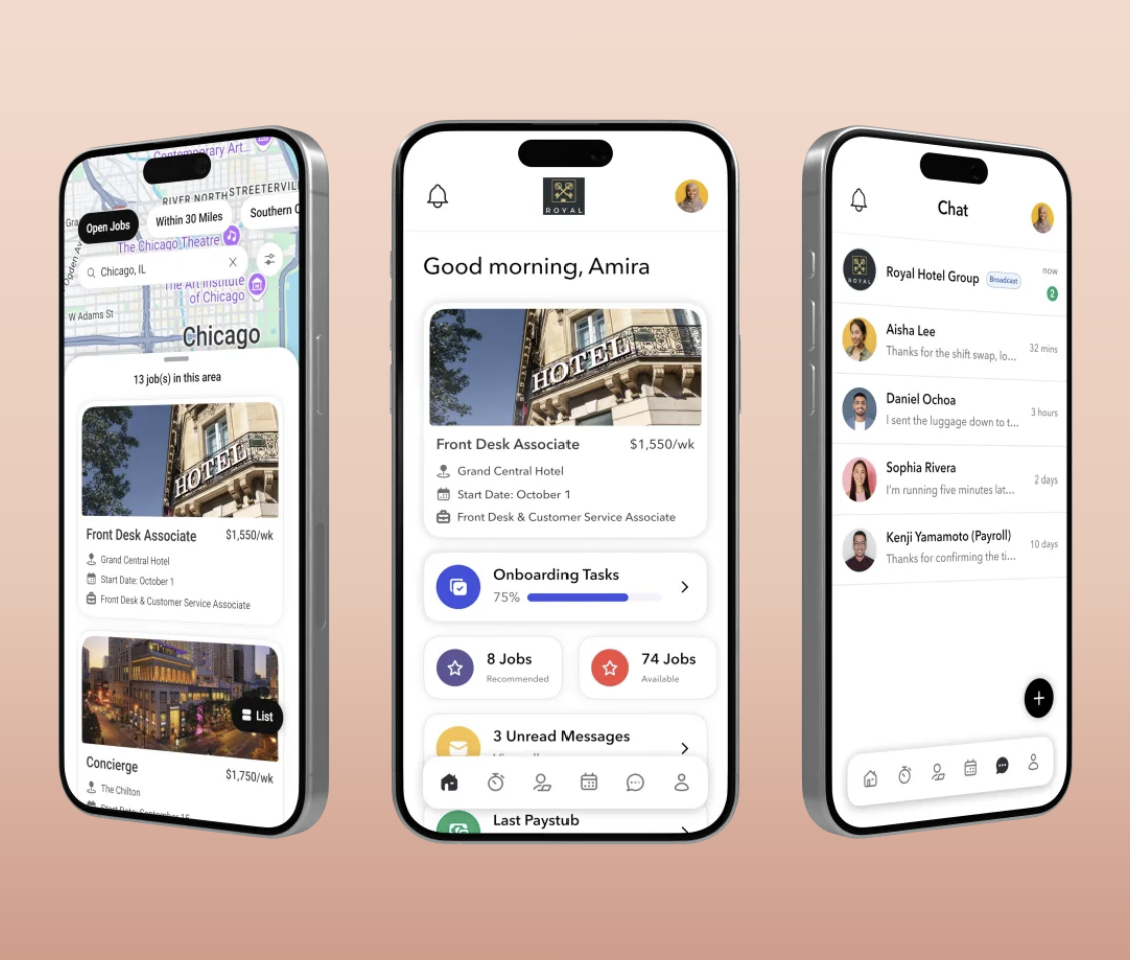
When researching tools, remember to consider your managers’ perspectives as well. By providing visibility into who’s working where, when, and at what cost, you can help them avoid overspending and ensure full shift coverage at all times.
4 top hotel employee scheduling software options
Implementing hospitality employee scheduling software can revolutionize how you manage your team. It saves time by automating repetitive tasks, reduces labor costs with built-in budget tracking, and enhances scheduling flexibility with real-time adjustments.
Here’s a snapshot of four popular platforms to help kickstart your search.
1. Teambridge
Teambridge is an all-in-one hotel staffing and workforce management platform that helps centralize operations, automate complexity, and ensure every shift is filled, every time. Its scheduling tools let you customize schedule logic and filter schedule views by any field.
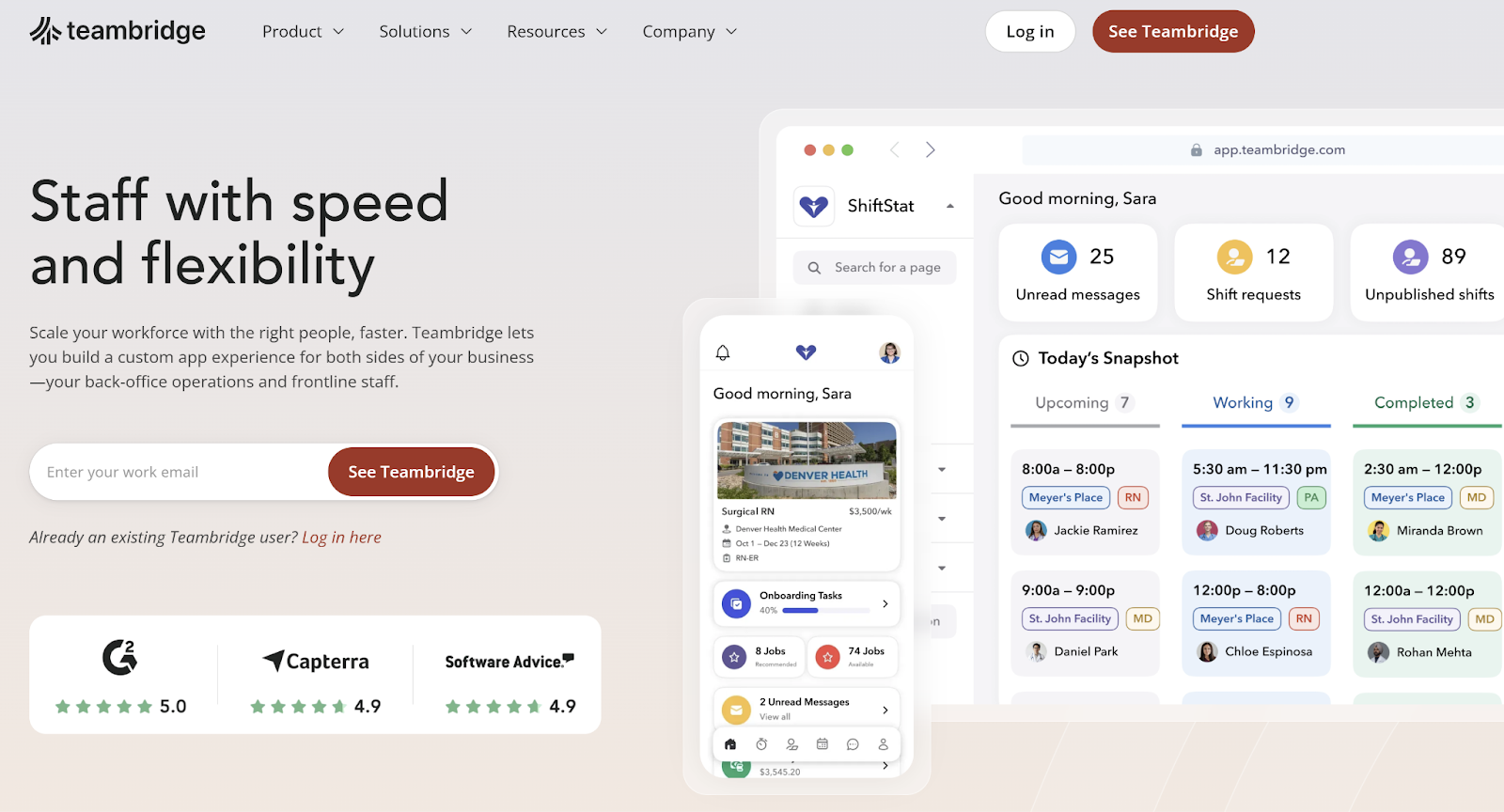
Key features:
- Drag-and-drop scheduler: Update shifts in real time with a single click using an intuitive dashboard.
- Employee mobile app: Empower staff to self-manage their availability, request time off, and trade shifts with ease.
- Intelligent automations: Automatically fill last-minute coverage gaps, collect documents, and enforce scheduling rules with customizable automations.
- Smart assignments: Receive a list of eligible staff members based on your scheduling rules when assigning open shifts.
2. HotSchedules (by Fourth)
HotSchedules is an employee scheduling app designed for the hospitality industry. While it’s mostly used in restaurants, the solution can also help hotel staff reduce admin time, decrease labor costs, and create better employee experiences.
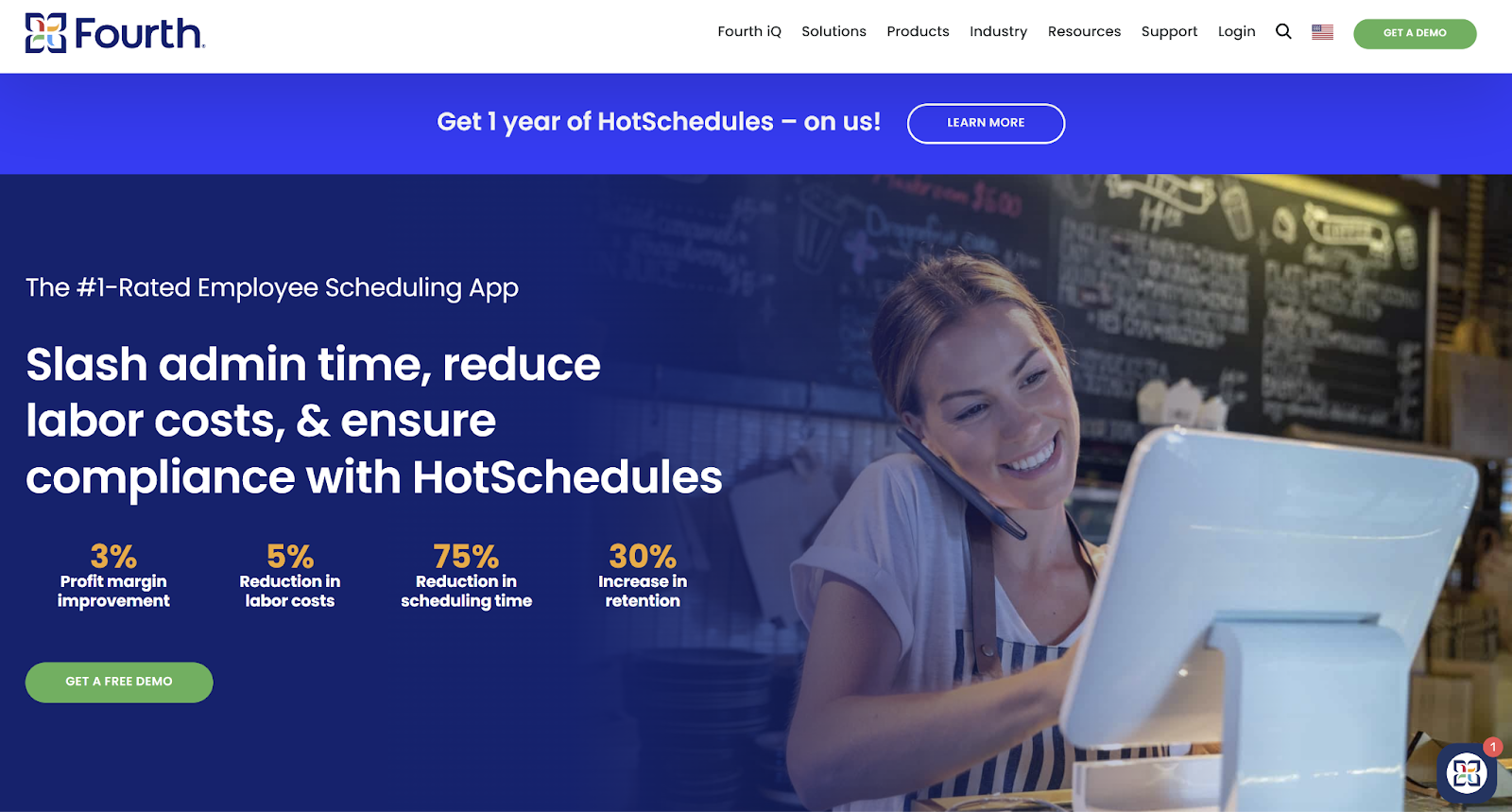
Key features:
- Demand forecasting: Forecast demand in 15-minute increments.
- Surveys: Use end-of-shift surveys to spot turnover risk and conduct pulse surveys to collect employee feedback.
- Labor compliance monitoring: Get notifications when schedules risk violating labor rules and monitor compliance constantly.
3. Unifocus
Unifocus is a hospitality platform that combines scheduling with time tracking, survey systems, and analytics. It helps hospitality businesses balance labor costs, compliance, and coverage to simplify scheduling.
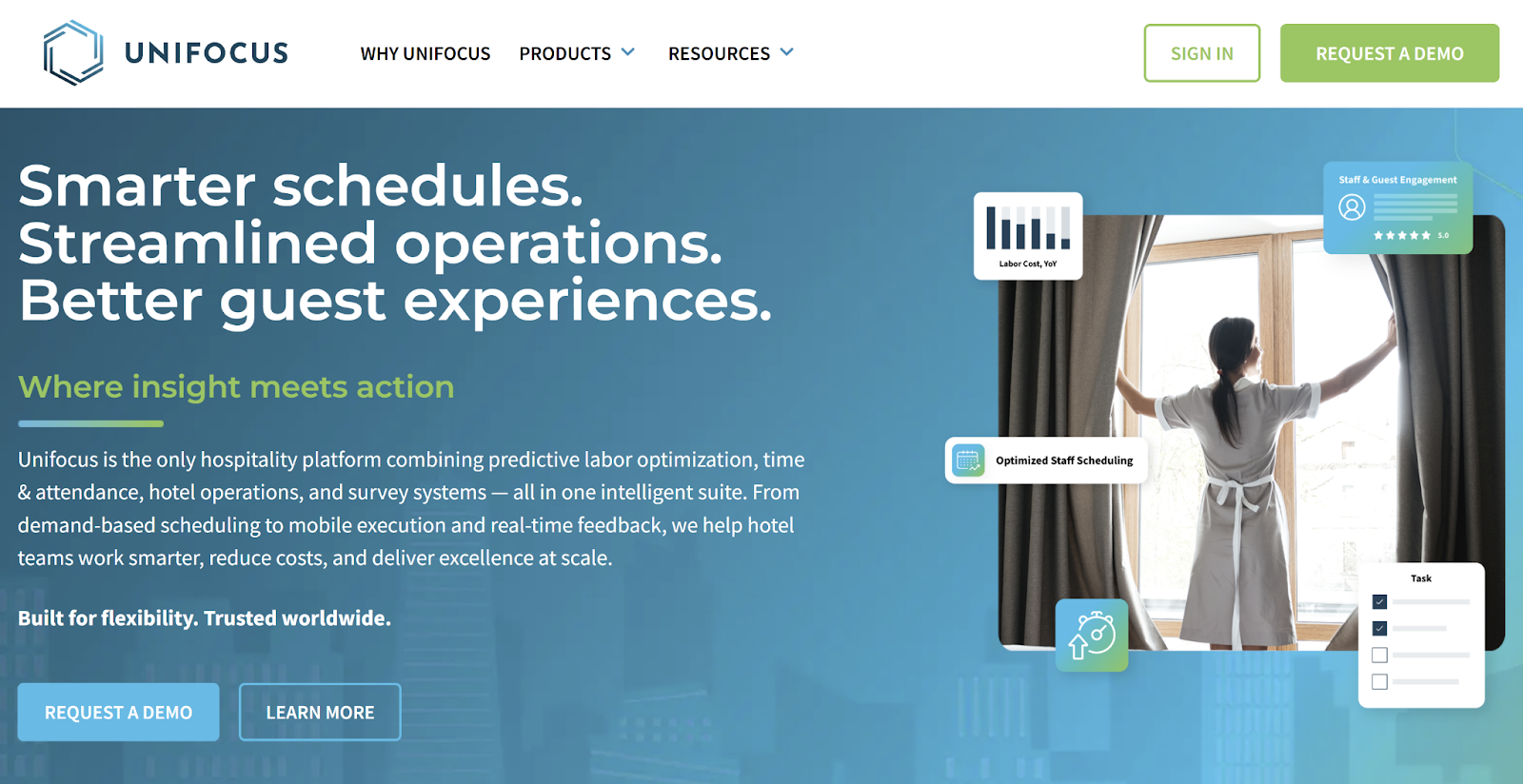
Key features:
- Predictive labor forecasting: Project staffing needs according to customizable forecasting windows.
- Compliance tools: Generate schedules that comply with labor laws and union rules.
- Scalability: Optimize labor across five or 500 properties, locally or globally.
4. M3’s Labor Management Software
M3, a hotel accounting software provider, offers a labor management solution designed to control labor costs while providing real-time visibility into staffing, wages, and scheduling.
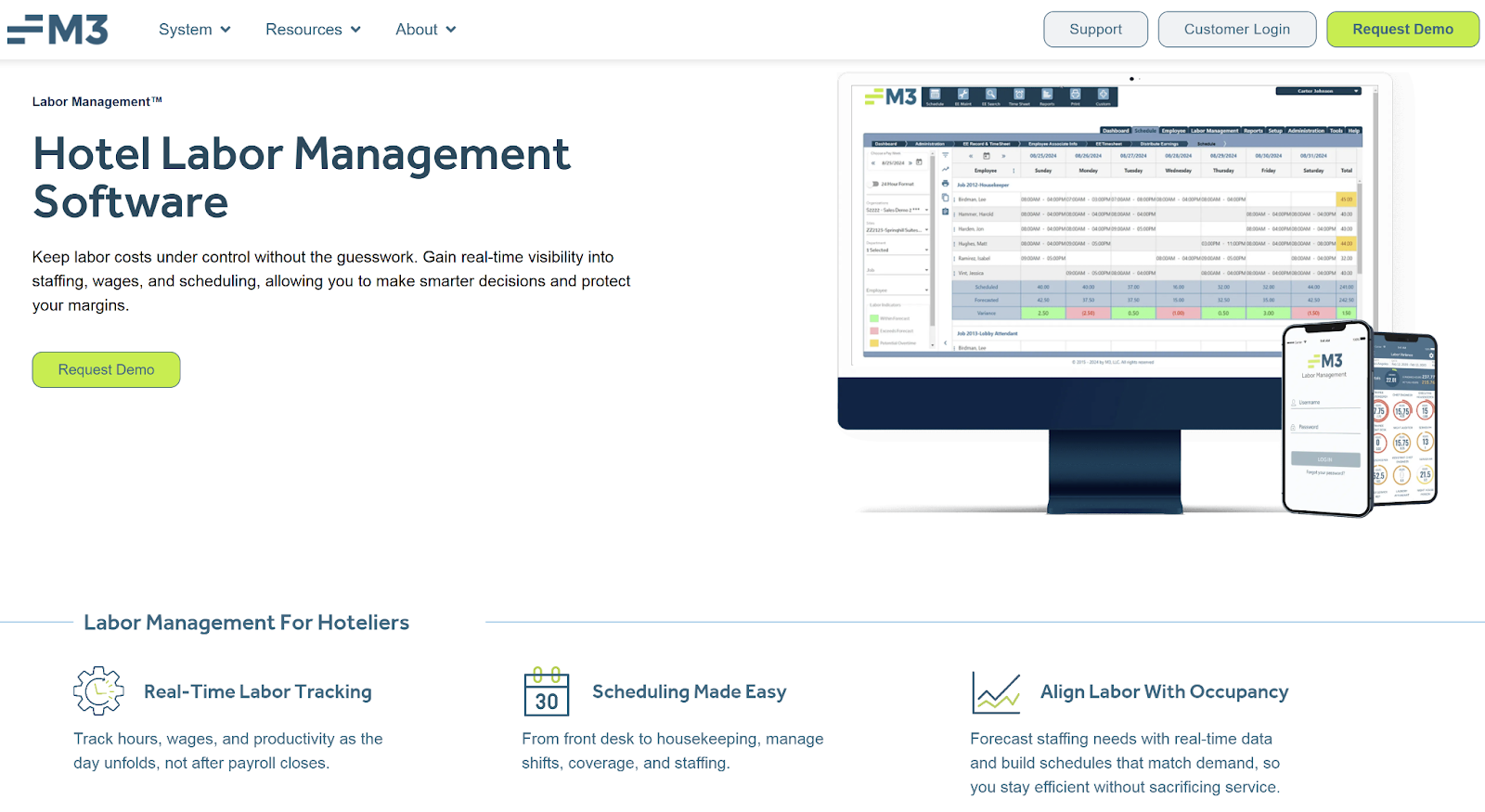
Key features:
- Real-time scheduling data: Align staffing with occupancy to build schedules that match demand.
- Multi-property oversight: Compare trends and identify problem areas across properties.
- Alerts and approvals: Set thresholds for overtime and breaks to avoid labor law violations.
Must-have features for hotel staff scheduling software
When evaluating tools, look for features that streamline the scheduling process and support your workforce compliance, communication, and operational efficiency goals. While every property has different needs, hotel management systems should include several essential scheduling features, such as:
- Intelligent demand forecasting
- Rule-based scheduling and compliance
- A drag-and-drop scheduler with built-in workforce automations
- A self-service mobile app for hotel employees
- Real-time shift swap functionality
Revamp your hotel employee scheduling process
Hotel employee scheduling doesn’t have to be a logistical nightmare. As guest expectations continue to rise and labor challenges persist, there has never been a better time to upgrade your scheduling system.
Teambridge’s hospitality staffing software streamlines scheduling by centralizing operations, automating shift creation, and enabling real-time mobile shift claiming. Its user-friendly drag-and-drop scheduler makes it easy to manage shifts without worrying about coding, while the mobile self-service app lets both managers and hotel staff adjust schedules quickly, increasing compliance and reducing administrative work.
Ready to bring your shift scheduling into the 21st century? Check out Teambridge’s hospitality scheduling software. Or, let’s hop on a call so you can see it in action.




.png)

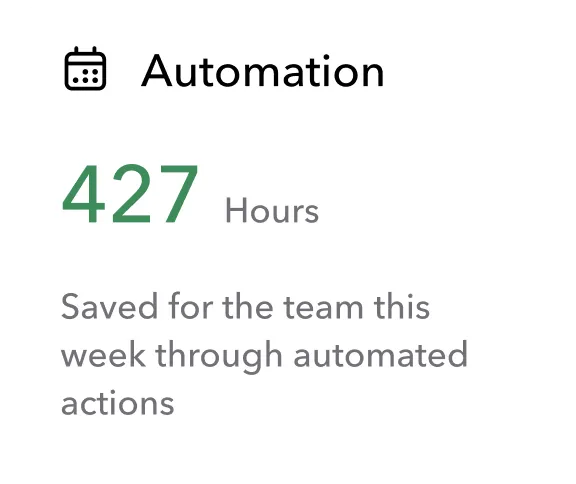
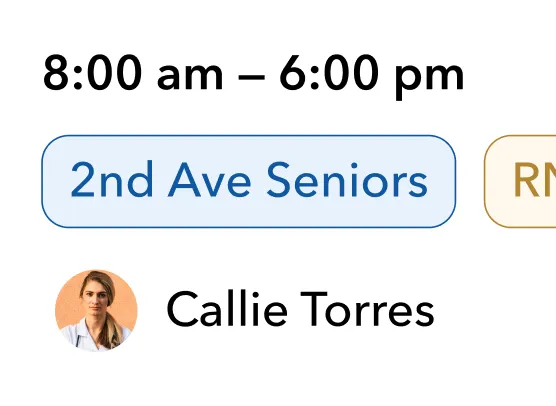

.png)
.png)
.png)